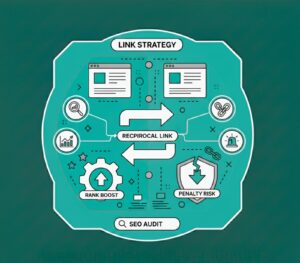The Rise of Map-Based Local Searches: How Google & Apple Maps Shape Local SEO
Blogs | SEO
Written By: Lauren Davison
Introduction
Local businesses are now easily found through map-based searches. Did you know that around 20% of all online searches now start on Google Maps or Apple Maps?. This shift is huge. In the past, people typed business names into search bars. Today, they tap on a map app to see what’s nearby.
For a small café, a dental clinic, or even a retail shop, this trend means one thing: if you don’t show up in map-based local searches, you might not get found at all. Customers want speed, convenience, and clear directions. They trust the information that Maps provide, including reviews, contact details, and hours, before making a decision.
But here’s the question: Is your business showing up where people are looking? In this blog, you’ll learn how Google and Apple Maps shape local SEO.
Table of Contents
Why Map-Based Local Searches Are Growing
Map-based local searches are really popular right now since people rely on their phones. Smartphones and apps that help you find your way around are now a part of everyday life. According to Search Engine Journal, map services are no longer merely for getting around. Google, Apple, and Bing Maps now account for 20% of all local searches.
Also, 15% of people report that they go to Google Maps first when they want something local. This means that it is now the best place to find local businesses.
Mobile Map Searches are Now The Norm
It’s quicker to get a phone, open Google Maps, and type “coffee near me” than it is to look it up on a website. Mobile map searches let you find your location, read reviews, and get instructions all in one spot. This makes it easier to get from search to buy.
Convenience Drives Adoption
Why call a business for instructions when you can just tap “navigate”? Why look at a lot of different websites for reviews when Google Maps or Apple Maps show them right away? This ease of use is driving the growth of local business search trends.
Trust And Real-Time Updates
People trust Maps because they get real-time details like traffic, opening hours, and busy times. For businesses, this means you must keep your details accurate. If your hours are wrong, you may lose customers before they even walk in.
Google Maps vs. Apple Maps – What Businesses Should Know
When it comes to Google Maps SEO and Apple Maps visibility, many businesses wonder: which one matters more? The answer is both, but in different ways.
Google Maps Dominance
Google Maps is the giant. It integrates with Google Business Profiles, so updates flow across Google Search and Maps. With over one billion monthly active users, it drives massive visibility.
Businesses that optimise for Google Maps enjoy:
- Higher chances of ranking in the “local 3-pack.”
- Features like reviews, photos, Q&A, and posts.
- Seamless integration with Android devices and Chrome.
If you’re building a local SEO strategy, ignoring Google Maps is not an option.
Apple Maps Advantage
Apple Maps is catching up fast. With every iPhone update, Apple improves its accuracy. iOS users often default to Apple Maps because it’s built in and works with Siri voice commands.
For businesses, being listed here means access to a loyal, high-value audience. Many iPhone users are more likely to spend more per visit. Optimising for Apple Maps visibility ensures you don’t miss out on this profitable segment.
So the takeaway? Focus on both platforms. Google Maps brings volume. Apple Maps brings value.
Optimising for Map-Based SEO
Want to get a higher rank in local searches that use maps? You need to do more than just give your address. Consistency, credibility, and engagement are all important for map optimisation.
Correct Business Listings
This is the first step. Make sure your Name, Address, and Phone number (NAP) are the same everywhere. Search engines can think that “Main Street” on Google Maps and “Main St.” on Apple Maps are two separate places. Customers and algorithms both get confused by details that don’t match up.
Also, make sure your company hours are up to date. Think about a customer who drives to your store only to discover it is closed. That’s a loss of confidence and money.
Ratings and Reviews
Have you ever picked a restaurant because it had a 4.5-star rating? A lot of individuals have. Reviews are verification from other people. They tell new customers that you are a good choice. But they do more than that. Google and Apple think that a business is good if it gets a lot of good ratings. This can help you go up in the rankings. You should answer all reviews, good and poor. It indicates that you care about what your customers think.
Updates and photos
A picture says a lot. More people click and visit listings that include new, high-quality photographs. Why? They help clients know what to expect. Post photos of your products, your team, and the inside of your store. You should also use the “Posts” option in your Google Business Profile. You can tell them about events, deals, and news. This makes your listing look active and interesting, which is good for map optimisation.
Keywords and Category
It’s really important to pick the proper category. If you’re a bakery but identify yourself as a “restaurant,” you won’t reach the right people. You should also include local keywords in your profile and postings. For example, “bakery in Birmingham” or “retail shop in Manchester.” This helps algorithms find the relevant local business search trends for your business.
The Impact on Local Businesses
So, what does all this mean for local businesses? The impact is huge.
Driving Foot Traffic
Map-based searches often turn into visits. People searching “near me” want something now. According to Google, 28% of these searches lead to a purchase within a day. A strong Maps presence means more people walking into your store.
Boosting Calls and Conversions
When your phone number is right there on Maps, people call you without visiting your website. This is an instant conversion. For restaurants, salons, or clinics, these calls often lead to bookings.
Levelling the Playing Field
Here’s the best part: Maps give small businesses a chance to compete with big brands. A local coffee shop can show up above a Starbucks if it has better reviews and accurate details. Maps don’t just reward size. They reward relevance and trust.
So ask yourself: Are you giving customers a reason to pick you over competitors on the map?
The Future of Map-Based Search
The world of maps is not standing still. It is getting smarter and more interactive. Businesses that keep up will have a major advantage.
AI and Smarter Recommendations
Google and Apple are developing AI features that guess what people want. For instance, if you’re on a road trip, AI may advise a gas station, and if it’s close to noon, a café. Businesses that follow this AI-driven advice will get more attention.
Voice Search On The Rise
Voice search is getting more popular. “Hey Siri, find a plumber near me.” Many people are using voice searches, which go directly to Maps. This means that any local SEO plan will need to focus on more than just keywords. They need to optimise for natural phrases.
Directions for Augmented Reality (AR)
Apple and Google are each trying out AR navigation. Think of how cool it would be to hold up your phone and see arrows guiding you to a shop. This means that businesses will have to rely even more on mobile map searches.
It is clear that maps will become smarter, more graphic, and more tailored to each user. Businesses that get ready now will be in charge tomorrow.
Taking Action on Google Maps SEO and Apple Maps Visibility
Millions of people now start their local searches with maps. Maps choose who people see and who they don’t see, whether they search for a café, a mechanic, or a store. Businesses that invest in Maps optimisation now will get more customers, more calls, and more trust from their customers.
At Midland Marketing, we help businesses stand out on Maps. Our local SEO audits and optimisation services make sure that your business is always the first one people find, whether they are looking for Google Maps or Apple Maps.
Don’t let your rivals get ahead of you. Partner with our experts to ensure your listings are correct, get feedback, and improve your profiles on both Google Maps and Apple Maps.
Frequently Asked Questions (FAQs)
1. What are map-based local searches?
They are searches done on apps like Google Maps or Apple Maps to find nearby businesses.
2. Why is Google Maps SEO important?
Google Maps drives over a billion users each month, and it affects your visibility in local search.
3. Does Apple Maps visibility matter for small businesses?
Yes. Many iPhone users rely on Apple Maps. If your business isn’t listed, you’re missing out on a valuable customer base.

Written by - Lauren Davison
Introducing Lauren – one of our content writers who has a flair for SEO and creative strategy!
With a Master’s Degree in Creative Writing, Lauren has niched down into SEO and content writing.
Outside of work, she loves watching the darts, reading and the pub on the weekend.
Want some more?
Latest Insights & News

Revolutionising Marketing: The Rise of Situational Content Strategies
Situational content strategies involve tailoring content to specific moments, contexts, or audience behaviours. By aligning content with real-time trends, seasonal needs, and user intent, brands can increase relevance, improve engagement, and strengthen SEO performance.

Smart Ways to Identify and Fill Content Gaps Fast: A Complete Strategy Guide
Content gaps refer to missing information, unanswered questions, or underserved topics in your existing content. Identifying these gaps helps you create targeted, high-value pages that improve search visibility, satisfy user intent, and outperform competitors.

Reciprocal Links in SEO: Do They Still Boost Rankings or Risk Penalties?
For the keyword “reciprocal links SEO,” focus on explaining how reciprocal linking works today. Reciprocal links are not harmful by default, but Google can flag excessive or manipulative link exchanges. To stay safe, only exchange links when they are contextually relevant, natural, and valuable to users.
